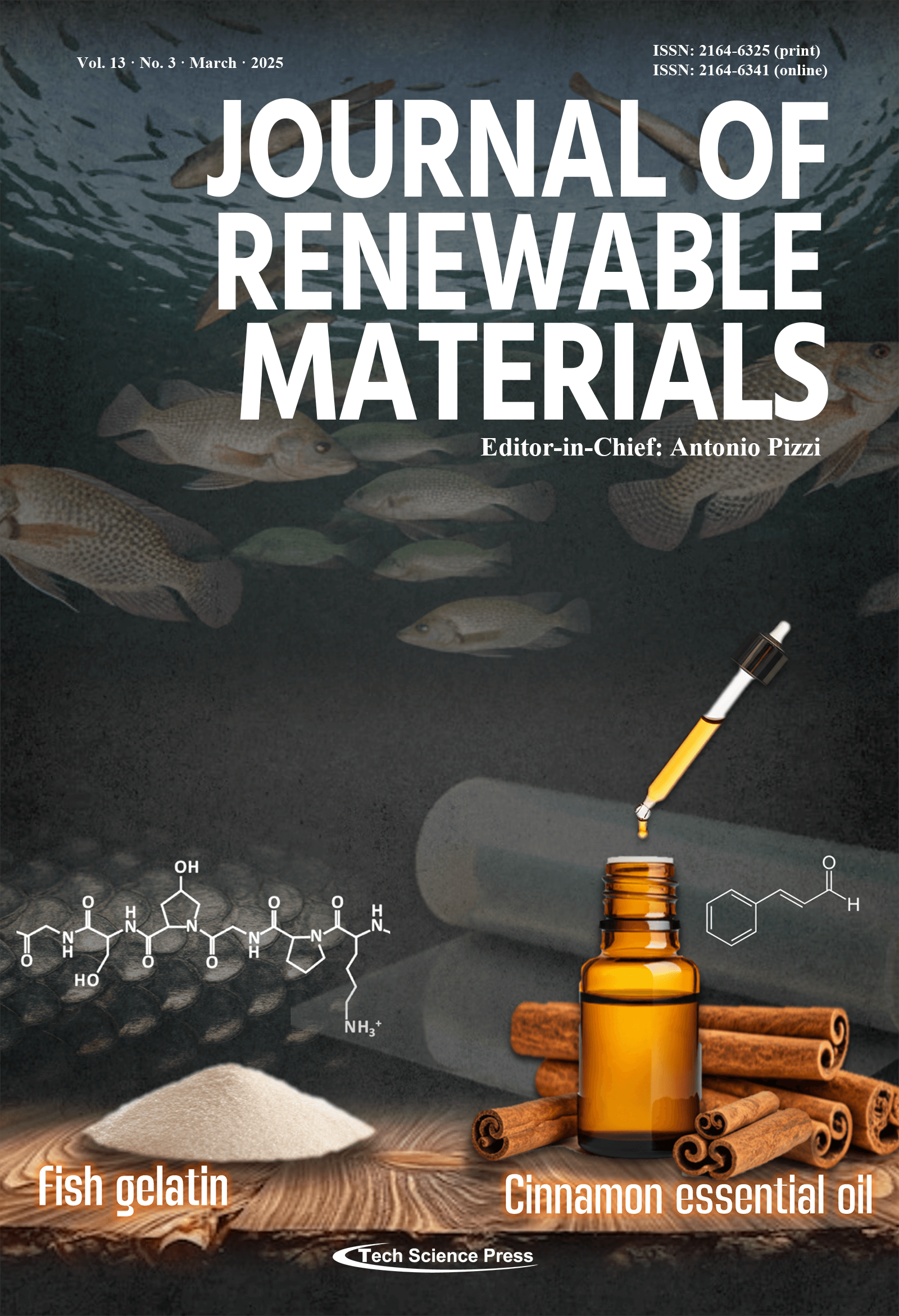From Waste to Biopolymer: Synthesis of P(3HB-co-4HB) from Renewable Fish Oil
Tatiana Volova1,2, Natalia Zhila1,2,*, Kristina Sapozhnikova1,2, Olga Menshikova1,2, Evgeniy Kiselev1,2, Alexey Sukovatyi1,2, Vladimir Volkov3, Ivan Peterson4, Natalia Ipatova1,2, Ekaterina Shishatskaya1,2
Journal of Renewable Materials, Vol.13, No.3, pp. 413-432, 2025, DOI:10.32604/jrm.2024.058775
- 20 March 2025
Abstract The article presents the results of a study on the possibility of synthesizing biodegradable poly(3-hydroxybutyrate-co-4-hydroxybutyrate) [P(3HB-co-4HB)] from renewable waste fish oil (WFO) by the Cupriavidus necator B-10646 bacterium. For the first time, waste oil generated during the processing of Sprattus balticus in the production of sprats was used as the main carbon substrate for the synthesis of P(3HB-co-4HB), and ε-caprolactone was used as a precursor instead of the more expensive γ-butyrolactone. Samples of P(3HB-co-4HB) with a 4HB monomer content from 7.4 to 11.6 mol.% were synthesized, and values of the bacterial biomass yield and the total yield of the… More >
Graphic Abstract
